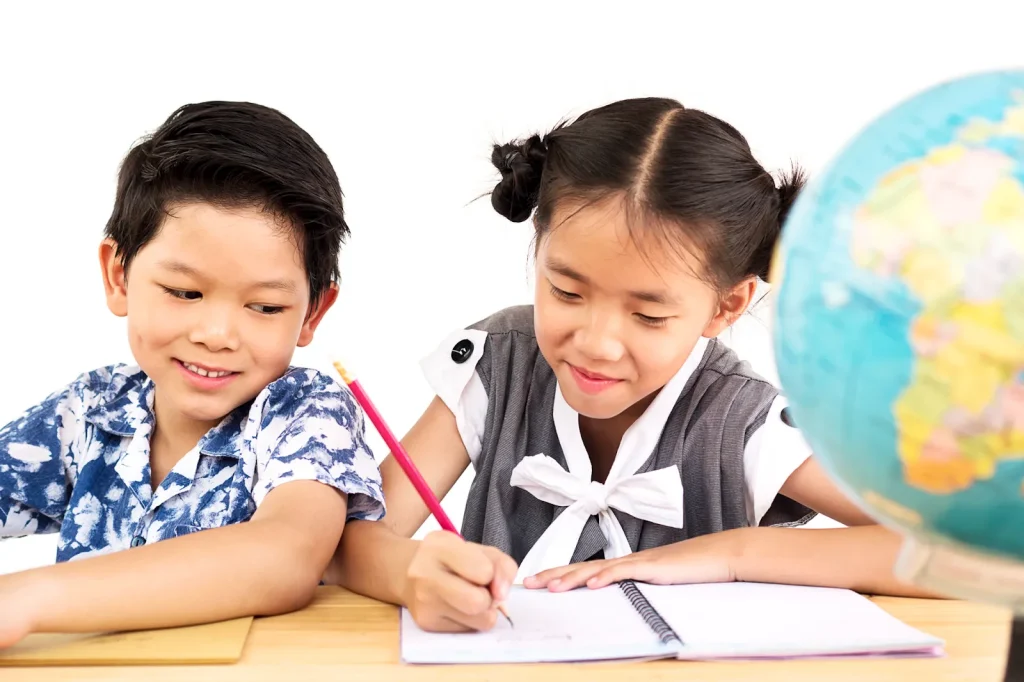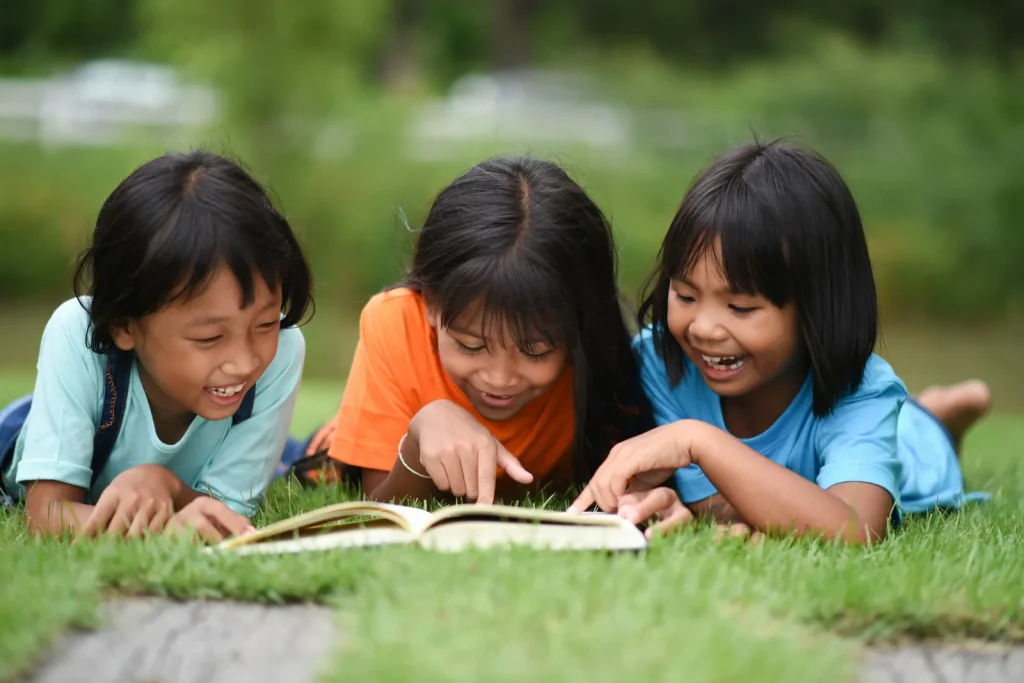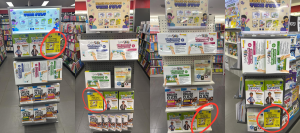Narrative writing is the art of telling a story. This can be based on real experiences or pure imagination. Understanding the different types of narrative writing helps writers craft stronger, more engaging stories that connect with readers on an emotional level.
Each narrative type shapes how events unfold, how characters are revealed, and how meaning is created. From chronological storytelling to more complex, non-linear or descriptive approaches, mastering these forms enhances both writing and reading skills.
In this post, we’ll explore the five major ways to organise a narrative writing essay and how each one helps bring stories to life.
1. Linear (Chronological) Narrative

A linear or chronological narrative is the most straightforward and familiar form of storytelling. It presents events in the order they happen, from beginning to end, helping readers easily follow the timeline of actions, emotions, and consequences. This clear sequence creates a natural flow that makes stories easy to understand and emotionally satisfying.
In a linear narrative, the story usually begins with an introduction of the setting and characters, moves on to a central problem or conflict, and ends with a resolution or reflection.
This step-by-step approach mirrors how we experience life: one moment leading naturally to the next. That’s why this structure is especially effective for young writers learning to organise their thoughts clearly.
For students in Singapore, this is the most common type of composition taught in upper primary and lower secondary English classes. It helps them structure their writing logically, ensuring that the beginning sets the scene, the middle develops the problem, and the ending provides closure.
Teachers often encourage this type of narrative for school exams such as the PSLE or O-Level Continuous Writing Paper, as it demonstrates clear sequencing and control of time.
Key Features
- Follows a clear, step-by-step sequence: Events unfold in order, allowing readers to follow the story without confusion.
- Establishes setting, characters, conflict, and resolution in order: Each element builds naturally upon the previous one, making the story logical and complete.
- Creates a natural sense of progression and clarity: Readers can easily see how one event leads to another, producing a satisfying and cohesive narrative.
Examples
- The Diary of Anne Frank – Presents real-life events in chronological order, showing Anne’s experiences and emotions over time.
- Films like Forrest Gump – Follow the main character’s life from childhood to adulthood, highlighting major events in sequence while maintaining emotional continuity.
- A student’s composition about “My First Day at Secondary School” – Starts with waking up and feeling nervous, progresses through key moments of the day, and ends with a sense of relief or excitement for what’s ahead.
2. Non-Linear (Disrupted Chronology) Narrative
A non-linear or disrupted chronology narrative tells a story by rearranging the usual order of events. Instead of moving neatly from beginning to end, this structure jumps between different time periods, perspectives, or emotional moments.
Writers use techniques such as flashbacks, flash-forwards, or time shifts to build suspense, reveal character motivation, or connect past and present experiences. This approach challenges readers to piece together the timeline, making the story feel layered and thought-provoking.
In this type of narrative, time becomes a tool rather than a rule. For example, a writer might begin the story with a dramatic ending, then move backwards to explain how everything began.
Or, they might weave memories from the past into present-day scenes to show how a character’s emotions or choices are shaped by earlier experiences. These shifts make stories feel more reflective, emotional, and realistic. Such is very much like how our minds replay important moments from different stages of life.
In Singapore classrooms, students often encounter this type of storytelling when studying literature texts or advanced model compositions. It helps them see how structure can deepen meaning and emotional impact.
For instance, by rearranging time, a writer can draw attention to cause and effect in a subtler way, encouraging readers to think about why events happened rather than just what happened.
Teachers can guide students to experiment with this structure in their own writing, such as starting in the middle of an action scene and later filling in the background details through flashbacks.
Key Features
- Events unfold out of order: The timeline may jump back and forth, requiring readers to connect pieces of the story themselves.
- Uses flashbacks, foreshadowing, or multiple timelines: These techniques reveal key information at strategic points, building depth and emotional resonance.
- Builds mystery, tension, or emotional impact: By withholding certain details or revealing them later, writers engage readers and make the story more powerful.
Examples
- To Kill a Mockingbird – The story opens with Scout as an adult recalling her childhood in Maycomb, Alabama, blending memory with present reflection.
- The Notebook – Alternates between past and present timelines to show the enduring love between Noah and Allie.
- The Kite Runner by Khaled Hosseini – Begins with a powerful memory from the protagonist’s past, then jumps between decades to uncover the emotional consequences of his choices.
- Films like Slumdog Millionaire – Use constant time shifts between a present interrogation and flashbacks from childhood, slowly revealing how each moment led to the character’s success.
3. Descriptive Narrative

A descriptive narrative is all about bringing a story to life through rich imagery, vivid details, and emotional depth. Instead of simply telling readers what happens, the writer uses sensory language by describing how things look, sound, smell, feel, or taste, to create a scene that feels real and immersive.
This type of writing slows down the pace of the story to focus on atmosphere and emotion, helping readers see the story in their minds as if they were part of it.
In a descriptive narrative, every sentence works like a brushstroke in a painting. The writer may describe the soft glow of streetlights after rain, the sound of a teacher’s voice echoing in a quiet classroom, or the bittersweet smell of food that reminds a character of home.
These sensory details make a story vivid and memorable, transforming an ordinary event, such as waiting for a bus or celebrating a birthday, into a moment filled with feeling and meaning.
For example, instead of saying “I was nervous”, a student could write “My palms were damp and my heart thudded against my chest as I waited for my name to be called.” This approach helps compositions stand out for their emotional authenticity and imagery.
Key Features
- Strong sensory imagery and figurative language: Writers use vivid details and comparisons to paint pictures in the reader’s mind.
- Emphasis on atmosphere, tone, and emotion: The focus is on how a scene feels, not just what happens.
- Focus on “showing” rather than “telling”: Instead of stating facts, writers reveal emotions and experiences through action and description.
Examples
- The Great Gatsby by F. Scott Fitzgerald – Renowned for its lush descriptions of 1920s luxury, colour, and emotion, immersing readers in the glamour and sadness of the Jazz Age.
- Charlotte’s Web by E. B. White – Uses gentle, sensory language to describe life on a farm, helping readers feel the beauty and simplicity of nature.
- The Chronicles of Narnia by C. S. Lewis – Richly paints fantastical landscapes, making readers feel as if they’re walking through snowy forests and magical kingdoms.
4. Viewpoint (Perspective) Narrative
A viewpoint or perspective narrative focuses on who is telling the story, and how that choice influences what readers see, know, and feel. Every story is filtered through someone’s eyes, thoughts, and emotions.
That “someone” could be the main character speaking in the first person (“I”), a third-person narrator observing events, or even multiple narrators who each share their own version of the truth. The viewpoint determines how readers interpret events and connect emotionally with the story.
The power of a viewpoint narrative lies in its ability to control information and bias. A story told by a child, for example, might sound innocent or confused, while the same event narrated by an adult could carry maturity, regret, or irony.
Writers use this to shape readers’ understanding, showing that who tells the story can completely change its meaning. This is why many literature texts and English composition exercises focus on perspective: it teaches students to think critically about character, motivation, and truth.
Encouraging students to think about why a narrator might be biased develops their analytical skills and strengthens empathy. It also helps them appreciate how writers use perspective to reveal complex human emotions, from guilt and love to fear and hope.
Key Features
- Focuses on the narrator’s voice, bias, and reliability: The story’s tone and meaning depend on who is telling it and what they choose to share.
- Can use first-person (“I”), third-person limited, or omniscient perspectives: Writers may let readers experience one person’s thoughts or see everything from a distance.
- Offers insight into thoughts, emotions, and motivations: The chosen viewpoint shapes how readers understand each character and event.
Examples
- The Catcher in the Rye by J. D. Salinger – Told through the first-person voice of Holden Caulfield, whose emotions and opinions shape the entire story’s mood and honesty.
- Wonder by R. J. Palacio – Uses multiple narrators to show how different characters view the same situation, teaching empathy and perspective-taking.
- Twilight by Stephenie Meyer – Told entirely from Bella Swan’s first-person perspective, allowing readers to experience her emotions, doubts, and romantic tension directly — a strong example of how personal viewpoint shapes tone and emotional connection.
5. Historical / Real-Life (Non-Fictional) Narrative

A historical or real-life (non-fictional) narrative tells true stories drawn from actual experiences, real people, or historical events, but written with the emotional depth and structure of fiction.
Unlike factual reports or essays, this type of narrative focuses on human experiences, emotions, and lessons, helping readers connect personally with real moments from the past or present.
Writers often use storytelling techniques such as dialogue, description, and suspense to make true events feel engaging and memorable.
In this type of writing, truth is the foundation, but the craft lies in how the story is told. A historical or real-life narrative might recount a major world event like World War II or a personal experience such as overcoming a challenge at school.
The goal is not just to inform readers, but to move them, showing the courage, conflict, or reflection behind the facts. This form of narrative writing helps readers and students understand that real stories can be as powerful and inspiring as fictional ones.
Key Features
- Based on true events or lived experiences: The story reflects something that really happened — in the writer’s life or in history.
- Uses narrative structure (introduction, conflict, resolution) for storytelling impact: Real events are shaped into a story arc that engages readers emotionally.
- May include personal reflection or moral insight: The writer often ends with a reflection on what was learned or how life changed as a result.
Examples
- Long Walk to Freedom by Nelson Mandela – A biographical narrative tracing Mandela’s life journey, struggles, and triumphs in South Africa’s fight for equality.
- I Am Malala by Malala Yousafzai – A first-person account of a young girl’s bravery and activism for education, told through a deeply personal lens.
- Educated by Tara Westover – A memoir about growing up in a restrictive environment and finding empowerment through education and self-discovery.
Conclusion About The Types Of Narrative Writing
Understanding the different types of narrative writing isn’t just about learning definitions. Instead, it’s about giving young writers the tools to express ideas with structure, emotion, and purpose.
Each type, whether linear, non-linear, descriptive, viewpoint, and historical,serves a unique role in storytelling. When students learn how and when to use these forms, they start writing with greater clarity, creativity, and confidence.
At DO Applied Learning by Epoch Talent Academy, we help students do exactly that. As one of the top English centres in Singapore for kids, we offer Singapore’s ONLY English Education Programme that operates on a Pay-Only-If-Your-Child-Improves basis.
That means no deposits, no admin fees, and no penalties if you ever choose to stop lessons. We have full confidence in our methods because they deliver massive, sustained improvement, not just for the next exam, but for success beyond the classroom.
Our unique Pentagon Values System combines powerful English study strategies with mindset development, helping your child grow into both an exceptional learner and a confident individual. Beyond high scores, we nurture thinkers, leaders, and lifelong achievers.
If your child is in Primary 5, 6, or preparing for the PSLE, be sure to check out our WRITING GENIUS programme, a proven approach that summarises the “1 Main Idea To Write 1000+ Compositions” method used by Teacher Daniel.
This trusted framework helps students craft outstanding compositions for Paper 1 Continuous Writing and gain mastery over narrative writing in primary school.
Contact us today because when it comes to English, we don’t just teach writing but build writers who think, create, and thrive.
Frequently Asked Questions About The Types Of Narrative Writing
Does Narrative Writing Always Follow One Specific Type?
No, narrative writing doesn’t have to follow just one specific type. Many stories combine elements from different types of narrative writing to create depth and variety. For example, a writer may use a linear structure with descriptive language and shifts in viewpoint to make the story more engaging.
Is One Type Of Narrative Writing Easier To Teach Than Others?
Yes, the linear or chronological narrative is generally the easiest to teach, as it follows a simple, step-by-step sequence.
This helps students organise ideas clearly before exploring more complex structures. Once they are confident, teachers can introduce non-linear or viewpoint narratives to strengthen analytical and creative skills.
Should Narrative Writing Always Include Dialogue?
Not necessarily.Dialogue can make a story more lively, but it’s not essential for every type of narrative writing.
Some narratives, especially descriptive or reflective ones, focus more on setting, atmosphere, or inner thoughts. What matters most is that the story feels complete and emotionally engaging, whether or not dialogue is used.
Do All Types Of Narrative Writing Need A Clear Conclusion?
Most narratives benefit from a conclusion, but it doesn’t always need to be definitive. Linear and real-life stories often have clear endings, while non-linear or viewpoint narratives may leave readers with open or thought-provoking conclusions. The key is to ensure the ending fits the tone and purpose of the story.
Is Narrative Writing The Same As Creative Writing?
Not quite. Narrative writing focuses specifically on telling a story with a structured beginning, middle, and end, while creative writing covers a wider range of genres like poetry, scripts, and essays.
However, narrative writing is a major branch of creative writing, and both rely on imagination and strong language skills.
Can Understanding The Different Types Of Narrative Writing Help With Exam Preparation?
Yes, it can significantly improve a student’s performance in English exams. By understanding how each narrative type works, students can adapt their writing to different prompts and exam questions.
It also helps them plan stories more effectively, develop ideas clearly, and demonstrate stronger control over tone and structure.












